#bike rack
Text
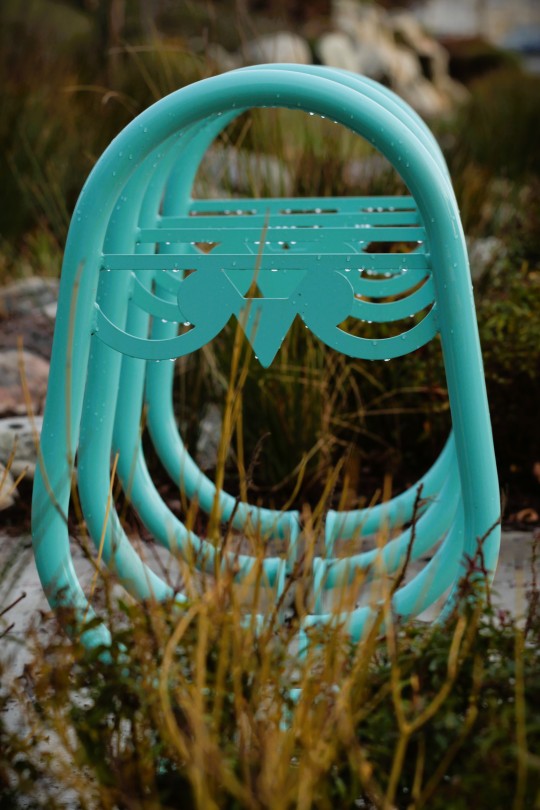
bike rack on a rainy day
#bike rack#rainy day#playground#fraser river district#water droplets#vancouver#local#photographers on tumblr#original photographers
71 notes
·
View notes
Text
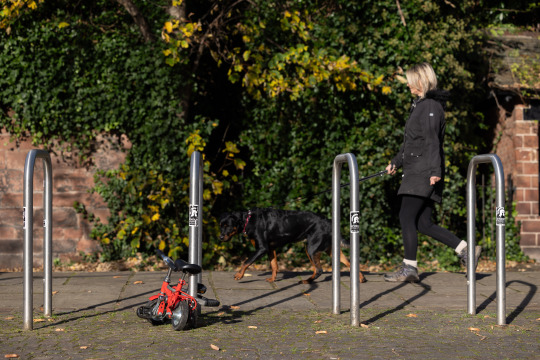
The Groves, Chester.
#clown bike#clown trike#clown car#Tim Foxton#Chester Contemporary#Man Chester#Chetser#dog#curious dog#street photography#lens culture#bike rack#art#artiste#installation#installation art
22 notes
·
View notes
Text
Bike Rack Recs
Bikejoring (and other active people) side of dogblr-- what do you use for bike racks? I have a 2016 Subaru Outback and my dogs ride in a variocage in my trunk. I need to be able to access my trunk when transporting my bike.
I would rather avoid using a roof rack if possible because I am short and weak and have preexisting back pain.
I am in the United States.
Thank you!
#dogblr#bikejoring#dog gear#bike rack#bicycle#I don't have a bike yet but I would like to start budgeting
14 notes
·
View notes
Text

Day 35 - Spiral
#spiral#bike rack#black and white photography#film photography#darkroom#darkroom photography#original photographers#photography#photographers on tumblr#artists on tumblr#art#original art#my art#image description in alt
7 notes
·
View notes
Text


4x5 (2) by Minaev Pavel
11 notes
·
View notes
Photo

Duck Bike Rack
59 notes
·
View notes
Text

This photo demonstrates that simplicity can conceal deeper meanings. Initially resembling an abandoned building, it is, in fact, a mall. However, closer observation reveals a door once bustling with employee traffic and a bike rack that once held the bicycles of school students visiting the comic book store. While seemingly mundane, the photo harbors numerous untold stories. By taking the time to engage with it, one can unravel layers of narratives waiting to be discovered.
Photo copy right Chance Arndt
2 notes
·
View notes
Text
“9”

View On WordPress
#bike rack#coil#coiled#coiled-up#coiling#coils#downtown Toronto#Financial District#loop#metal#spiral#Toronto#tunnel
5 notes
·
View notes
Text

Some cool and colorful bike racks I found at a Beers and Queers event.
4 notes
·
View notes
Text
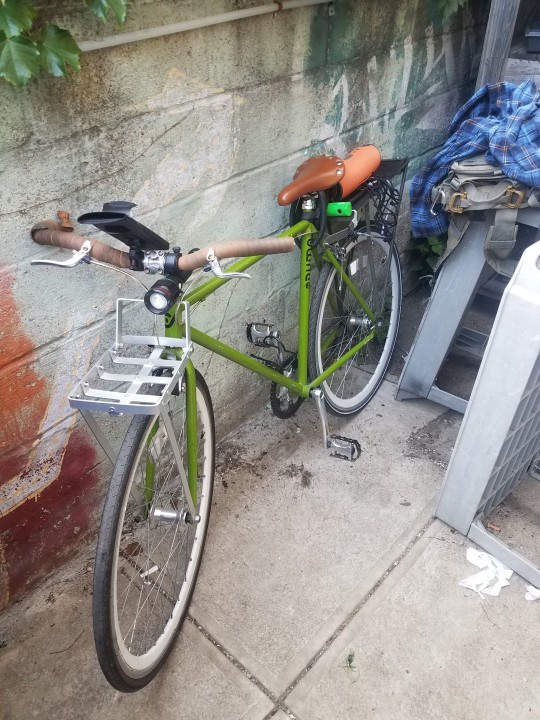

Riveted Aluminum front rack.
3 notes
·
View notes
Text

Empty bike rack, no Norm.
#lego#fun#legolonia#minifigure#funny#minifig#guy#norm#everyday#toy photography#lego photography#black and white#normal#just a normal guy living a normal life#greyscale#stuff#b&w#just a normal guy living a normal life.#norm alguy#bike rack
2 notes
·
View notes
Text
As the popularity of electric bikes continues to grow, so does the demand for bike racks that can accommodate them. While there are a few bike racks on the market that are designed for electric bikes, the selection is fairly limited. However, this is expected to change in the next few years, as more and more companies begin to produce bike racks specifically for electric bikes.
If you're in the market for a bike rack for your electric bike, here are a few things to keep in mind. First, make sure that the bike rack you choose is designed for electric bikes. While some traditional bike racks can accommodate electric bikes, they are not always the best option. Second, keep in mind that electric bikes are heavier than traditional bikes, so you'll need a bike rack that can handle the weight. And finally, make sure to choose a bike rack that is easy to use and install, as electric bikes can be difficult to put on and take off of traditional bike racks.
2 notes
·
View notes
Text
Early morning empty bike rack
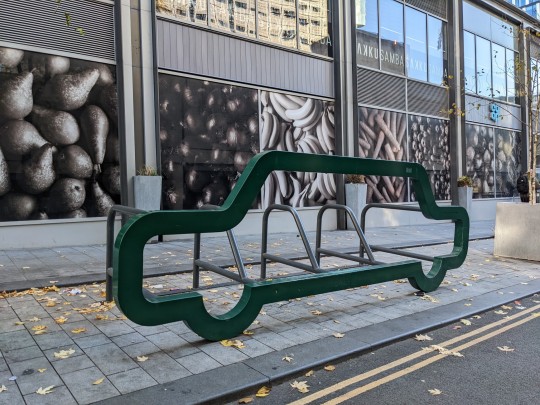
3 notes
·
View notes
Text

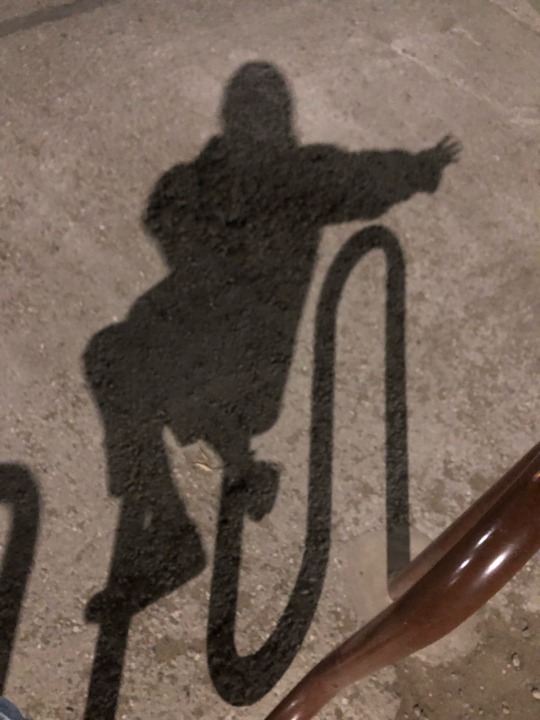






1 note
·
View note
Text
Sea Otter Coverage - Day 2
Sage Titanium Bicycles
While carbon might dominate the racing scene, Sage believe titanium is the future. It’s light, durable, easy to repair, and as Sage founder David Rosen believes, it has a soul that you can’t bring in composites. Based in Beaverton, Oregon, Sage offers road, gravel, cyclocross and mountain bikes that are made domestically in the United States. Sage started in 2012, and over…
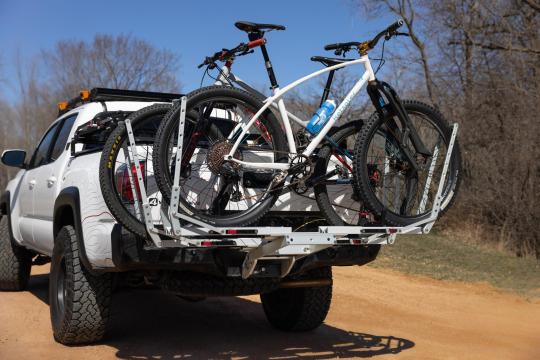
View On WordPress
#1UP#3D Printing#Aeroset 3#Barlow#Bearings#bike rack#BMC#Bottom bracket#Chris King#Enduro Bearings#Fat Paw#Fizik#Maxhit#Mechanisim#Micro Spline#Pas Normal#RoadMachine#Sage#Shimano#shoe#SOLO-SPLINE#Super Duty Hitch Rack#Wheels Manufacturing#Wolf Tooth#Zip-Nut
0 notes
Text
The Best Bike Rack for Any Type of Vehicle
Different types of bike racks serve varying needs. Styles range from tray-style (platform) hitch racks that are versatile and user-friendly, to vertical-style hanging hitch racks perfect for limited spaces. Although choice depends on your car type, the number of bikes to carry, and your budget, considering the rack's weight capacity and secure locks can help determine the most appropriate option. It's particularly beneficial if it’s easy to install, allows access to the rear of your vehicle without unloading bikes, is foldable, and lockable. With these options in mind, how about we dive deeper into comparing different types of bike racks?
When it comes to bike racks, there are various types available, including tray-style (platform) hitch racks, hanging-style hitch racks, trunk racks, roof racks, and pickup carriers. Each type offers unique features such as ease of use, bike accessibility, and security options. For example, tray-style hitch racks are versatile and user-friendly, while some higher-priced models come with integrated cable locks for added security. It's essential to consider factors like your vehicle's compatibility, the number of bikes you want to carry, and whether you need rear vehicle access while transporting bikes when selecting a bike rack.

Comparing Different Types of Bike Racks
Bike racks come in various styles, each designed to serve specific purposes. The first step to finding the right bike rack for your needs is to understand the key differences between these types.
Tray-Style (Platform) Hitch Racks
Tray-style hitch racks are a popular choice due to their ease of use and versatility. These racks usually have a platform where you can rest your bike's tires, making them suitable for various bike styles, including mountain bikes and e-bikes. They also offer easy loading and unloading, eliminating the need for lifting bikes onto the rack.
Hanging-Style Hitch Racks
Hanging-style hitch racks are another common option. They feature arms where you hang your bikes by their frames. These racks are generally less expensive than the tray-style models and can carry multiple bikes, but they may require more effort to load and secure the bikes properly.
Vertical-Style Hanging Hitch Racks
Vertical hanging hitch racks are ideal for those with limited storage space as they hold the bikes vertically instead of horizontally behind your car. This design saves space and often allows you to carry more bikes compared to traditional hanging-style racks.
Trunk Racks
If you don't have a trailer hitch, trunk racks might be a suitable option for you. These lightweight, portable racks strap onto the rear trunk or hatch of your vehicle using straps and hooks for support.
Roof Racks
Roof racks are popular among outdoor enthusiasts who want to transport their bikes on top of their vehicles. These racks typically require a base roof rack system installed on your car, providing a solid foundation for attaching various accessories, including bike mounts.
Pickup Carriers
Pickup carriers are designed specifically for trucks, allowing you to transport your bikes in the bed of your truck safely and securely.
As you can see, the market offers a diverse range of bike racks tailored to different needs and preferences. Understanding these variations will help you make an informed decision when choosing a bike rack that aligns with your unique requirements.
Now that we've explored the different types of bike racks available, let's shift our focus to the essential features to consider when selecting a bike rack for outdoor and garage storage.
Essential Bike Rack Features for Outdoor and Garage Storage
As you contemplate the type of bike rack that will best suit your needs—whether for outdoor or garage storage—it's crucial to consider key features that play a vital role in the functionality, security, and convenience of a bike rack.
Weight Capacity
The weight capacity of a bike rack is essential and can substantially vary between models. For outdoor storage, the weight capacity typically ranges from 50-60 lbs, while for garage storage, it can extend up to 100-120 lbs. It's critical to ensure that the chosen bike rack can adequately support the weight of your bike(s). Exceeding the weight limit can lead to damaging the rack or causing accidents, especially when using a hitch rack for transportation.
Security Features
Integrated cable locks are a must-have feature for any bike rack intended for outdoor or garage storage. They provide an additional layer of protection against theft, offering peace of mind when leaving your bikes unattended. Opting for a lockable bike rack ensures that the entire unit can be securely fastened to prevent unauthorized removal.
Installation and Storage
Easy installation and convenient storage are pivotal factors, especially for garage storage. Wall-mounted, ceiling-mounted, or freestanding options should be easy to install without requiring extensive DIY skills or specialized tools. Moreover, the ability of the rack to fold up when not in use or for compact storage is beneficial in maximizing space efficiency in a garage setting.
Weather Resistance
Given that outdoor weather conditions can take a toll on equipment, it's vital to consider the weather resistance of the bike rack. Selecting a rack with rust-resistant coating and UV protection ensures its longevity and durability. This is especially important for outdoor racks exposed to sunlight and varying weather patterns.
Compatibility
Whether you're storing a single bike or multiple bikes, ensuring compatibility with your specific needs is critical. Different mounting options such as wall-mounted, ceiling-mounted, or freestanding should be available to accommodate various storage requirements.
By considering these essential features during your search for the perfect bike rack for outdoor and garage storage, you'll be better equipped to make an informed decision based on what matters most to you—be it safety, convenience, or durability.
Now equipped with knowledge about optimal bike rack features for outdoor and garage storage, let's shift our focus to exploring the best bike racks tailored for different vehicle types.
Best Bike Racks for Various Vehicle Types
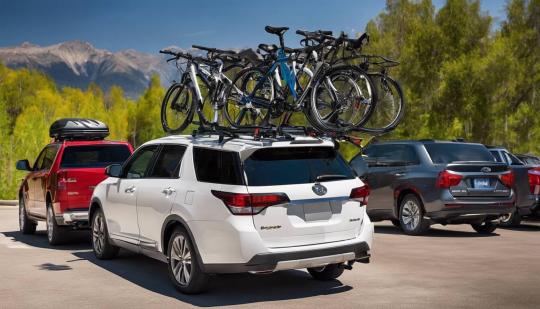
When it comes to selecting the right bike rack for your vehicle, you must consider the type of vehicle you own. Each type of bike rack is designed to fit specific vehicles and offers unique advantages based on user needs and vehicle construction.
Hitch Racks for Cars with Trailer Hitch
Advantages: Hitch racks offer stability and are ideal for regular use. They can carry multiple bikes and provide easy access to the rear of the vehicle without removing the bikes.
Considerations: It's important to ensure that the rack is compatible with your specific hitch size and the number of bikes you intend to carry.
Roof Racks for Vehicles without a Hitch
Advantages: Roof racks are versatile and compatible with a wide range of vehicles. They allow unobstructed access to the rear of the vehicle and can often be used for other cargo-carrying purposes.
Considerations: Keep in mind that loading and unloading bikes on a roof rack may require more effort due to lifting the bikes overhead. Additionally, clearance height must be considered, especially for low-clearance areas such as garages.
Trunk Racks for Portable Option
Advantages: Trunk racks are portable and easily removable, making them an excellent choice for sedan owners who want a temporary bike transport solution.
Considerations: Ensure proper installation and regular inspection to avoid damage to the vehicle's exterior and ensure the security of the bikes during transportation.
Pickup Carriers for Trucks
Advantages: Pickup carriers provide a convenient way to transport bikes in trucks, utilizing the truck bed space efficiently.
Considerations: It's important to secure the carrier in position effectively and protect the bikes from potential contact with the truck bed or other items during transport.
Considering your vehicle type when selecting a bike rack ensures a secure fit and ease of use throughout your biking adventures. Each style offers its own unique benefits, but always remember to carefully assess compatibility and installation requirements before making a final decision.
As we move forward, let's examine how the ease of bike rack installation plays a crucial role in your overall biking experience.
Assessing Ease of Bike Rack Installation
Before hitting the road with your precious bikes in tow, it's essential to consider the installation process of your bike rack. After all, nobody wants to spend more time setting up the rack than actually enjoying their ride. Each rack type comes with its own installation challenges and conveniences, so it's crucial to understand what makes for a hassle-free setup.
Tray-style hitch racks are commonly favored for their user-friendly design and easy installation process. These racks often feature a platform onto which the bikes are secured, allowing for quick loading and unloading without needing to lift the bikes high off the ground. With tray-style hitch racks, you can simply slide your bike onto the tray and secure it in place without much effort.
Tool-free installation is another convenient feature to look out for, as it eliminates the need for additional tools during setup. Imagine being able to assemble and install your bike rack quickly and easily without having to rummage through your toolbox or make a trip to the hardware store – now that's convenience.
Some bike racks even come with hand-tightened locking systems, enabling you to secure the rack onto your vehicle without wrestling with complex mechanisms or struggling with a plethora of tiny parts. This added feature not only simplifies the installation process but also provides peace of mind knowing that your pricey bike rack is securely attached to your vehicle.
Furthermore, when assessing ease of bike rack installation, considering whether the rack has convenient features such as integrated cable locks for securing bikes is important. Higher-priced hitch and roof racks often come equipped with these integrated cable locks, providing an added layer of security and peace of mind when transporting your bikes.
Remember that an easy and straightforward installation process significantly enhances the overall user experience, reducing frustration and saving valuable time. Whether it's tool-free assembly, hand-tightened locking systems, or integrated cable locks, prioritizing these features ensures that you can effortlessly set up your bike rack and hit the open road more swiftly.
With an understanding of the ease of installation features to look out for, let's now explore how each type of bike rack accommodates various car sizes and shapes.
Evaluating Bike Rack Security and Locking Systems
When choosing a bike rack, security is paramount. After investing in quality bikes, it's only natural to want to protect them against theft. Many bike racks come with integrated cable locks offering a measure of security; however, it's important to assess the effectiveness of these locking systems. Additionally, consider racks that do not come into direct contact with your bike's frame, thus minimizing the risk of scratches or damage.
Integrated cable locks provide a level of security by allowing you to securely fasten your bikes to the rack when unattended. This deters opportunistic theft and provides peace of mind in outdoor settings like parking lots or camping grounds where the bikes are left unattended for extended periods. However, individuals living in areas with higher rates of bike theft might require a more robust locking system.
Some high-end bike racks feature integrated key locks, adjustable locking arms, or combination locks designed with anti-theft features to provide increased security. These advanced locking mechanisms offer enhanced protection for your bikes and act as a deterrent against tampering or unauthorized removal. Therefore, it's important to consider the security rating and type of locking system provided by the bike rack manufacturer.
Here are a few examples:
Bike Rack A: Security Rating - 4.5/5, Locking System - Heavy-duty steel cable
Bike Rack B: Security Rating - 4.8/5, Locking System - Integrated key lock
Bike Rack C: Security Rating - 4.2/5, Locking System - Adjustable locking arms
Bike Rack D: Security Rating - 4.6/5, Locking System - Combination lock with anti-theft design
These ratings indicate how effective these bike racks are in preventing theft and ensuring the safety of your bikes while they're mounted on the rack.
Additionally, it's crucial to select a bike rack that minimizes any potential damage to your beloved bicycles. Racks that make contact with the bike's frame risk causing scratches, marks, or dents over time, deteriorating both the appearance and integrity of your bikes. By prioritizing bike racks that don't contact the frame, you can maintain the pristine condition of your bicycles while transporting them securely from one location to another.
Keeping these factors in mind ensures that you not only safeguard your bikes against theft but also protect them from inadvertent damage caused by the rack itself.
Storage and Portability of Bike Racks
When it comes to bike racks, pondering storage and portability can spare you a lot of inconvenience in the long haul. After all, having a dedicated place to keep your bike rack when unused is just as vital as owning one.
Consider Foldable Designs:Some bike racks are crafted to fold up when not in use, offering easy storage, especially if space is limited in your garage or if you want to keep the area clear for other activities when not biking. Foldable racks can easily tuck away against a wall or slide into a corner, making them an excellent option for maximizing space.
Portability Matters:Weight plays a crucial role in how easy it is to move and install a bike rack. Lighter models are generally easier to handle and install, making them a convenient choice if you plan to move the rack frequently or need to install it on your own.
Versatile and Easy to Store: Tray-style hitch racks are known for their versatility and ease of use. Many models boast a fold-up feature for efficient storage when not in use. Additionally, some roof racks come with folding arms, making them simpler to handle and store. These design features offer added convenience for users seeking efficient storage solutions without sacrificing performance.
While some might argue that lightweight racks may compromise on sturdiness, many manufacturers have found a balance where they deliver both portability and durability.
So, whether it’s ensuring easy storage during off-seasons or convenient transportation between different locations, considering these storage and portability factors will help you make an informed decision while selecting the best bike rack for your needs.
Exploring these integral aspects of bike rack selection provides a solid foundation for evaluating their price and value considerations—critical factors in determining the most suitable bike rack for your specific requirements.
Price and Value Considerations in Bike Racks
When it comes to choosing a bike rack, price and value play significant roles in the decision-making process. The cost of a quality bike rack can range from around $200 to over $1000, depending on the type, brand, and features it offers. While it's easy to be drawn towards the lower end of the price spectrum, it's vital to consider value in terms of what the bike rack has to offer and its long-term durability.
It’s important to weigh out your needs and priorities when considering different bike racks. A budget-friendly option might suffice if you don't transport your bikes frequently or for long distances. Conversely, if you're an avid cyclist who ventures on extensive biking excursions, an investment in a high-quality, durable rack may be well worth the initial cost.
For instance, a tray-style hitch rack with a higher price tag might provide greater convenience, versatility, and additional features such as integrated locks or easier loading systems compared to lower-cost hanging racks. The long-term benefits these features offer may justify the initial investment.
When evaluating the value of a bike rack, also factor in its weight capacity and overall durability. A robust bike rack that can securely carry multiple bikes without compromising safety is inherently more valuable than one with limited capacity.
Consider how often you plan to use the rack - perhaps daily or only for occasional outings - and assess whether investing in a sturdier, higher-priced model aligns with your usage frequency. Additionally, take into account the longevity of the bike rack. A cheaper option may require more frequent maintenance or replacement due to wear and tear, ultimately costing more over time compared to a durable, albeit pricier, alternative.
By carefully evaluating the intersection of price and value when choosing a bike rack, you can ensure that your investment provides both short-term affordability and long-term reliability—a balance that maximizes utility while remaining within your budget.
Selecting the right bike rack involves thoughtful consideration of cost against long-term benefits. This ensures that your purchase aligns with your needs while providing lasting value.
Mountain biking
Mountain biking shoes
Mountain biking helmets
Mountain biking gloves
Mountain biking shorts
0 notes